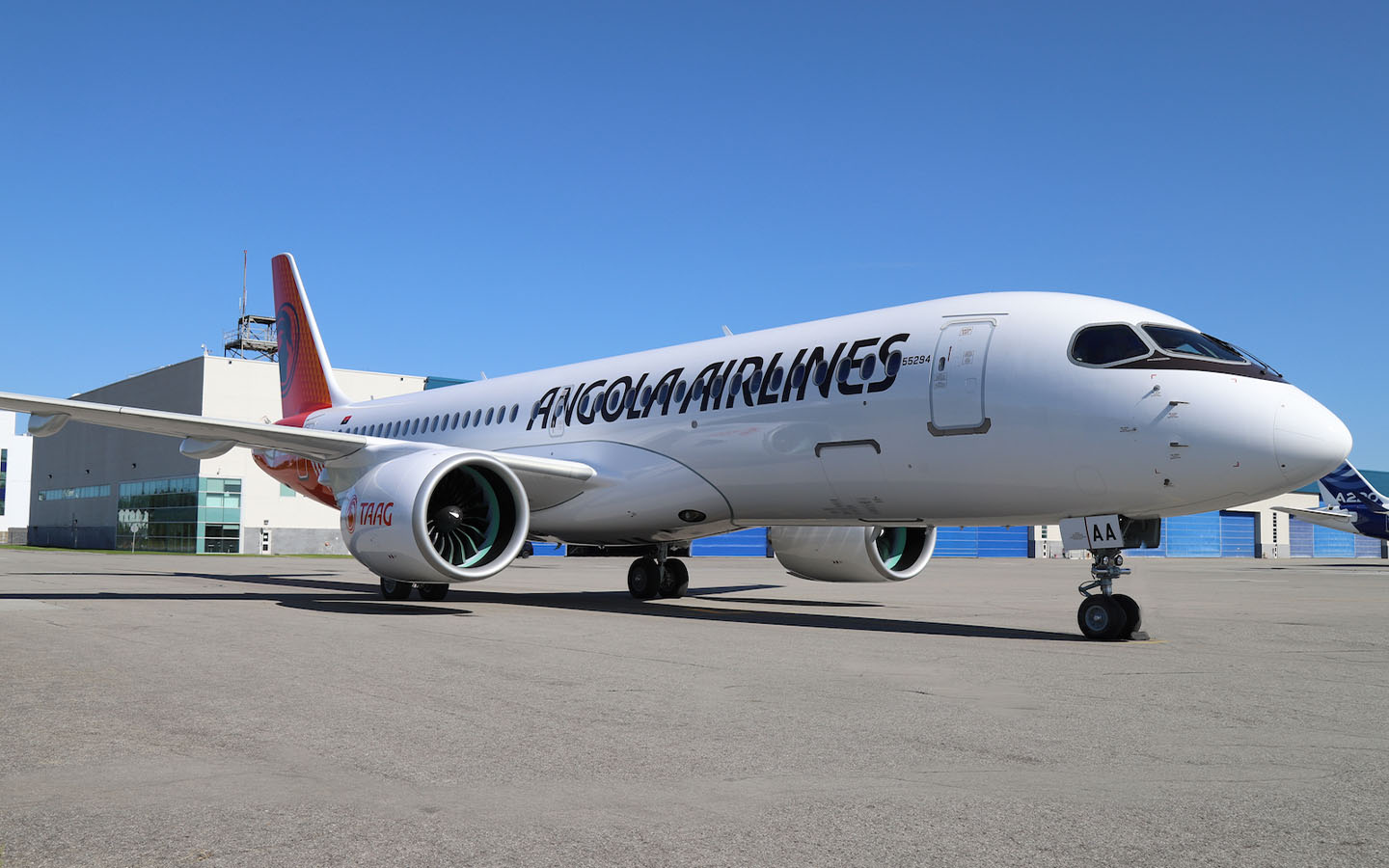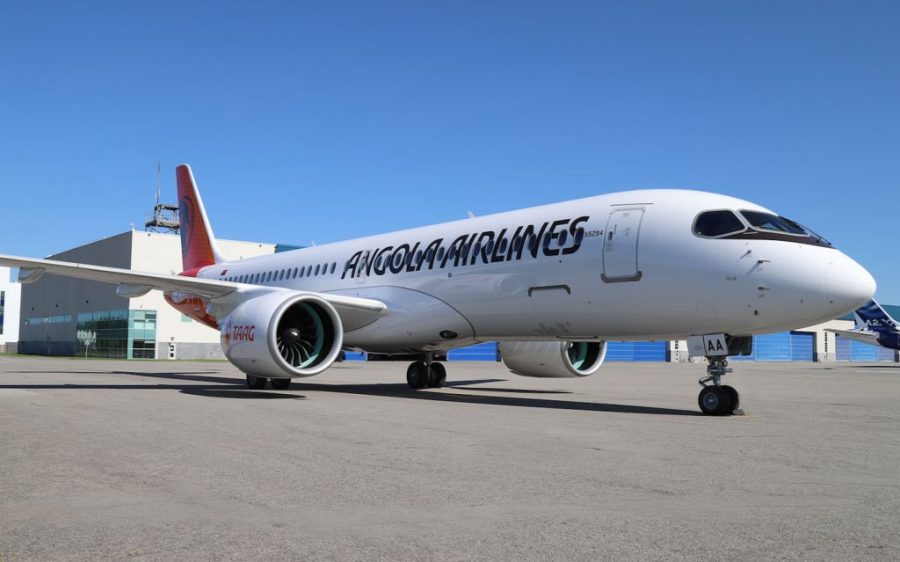Flagship carrier TAAG Angola Airlines recently welcomed its first Airbus A220-300, according to a statement issued 20 September, marking a significant step in its fleet modernisation efforts.
The new narrow-bodied plane is the first of six and seats 137 passengers – 12 business class, 125 economy. The improved fuel efficiency and lower operational costs of the A220-300 will help TAAG in its goal to enhance fleet efficiency and performance, particularly on local and regional routes.
“Adding the A220-300 demonstrates TAAG’s ambition for modernization and growth as the company builds a versatile fleet to address market demand under the airline’s expansion plan,” TAAG CEO Nelson de Oliveira said in a statement.
[See more: Angola’s president pushes for more ambitious air connections]
Capable of flying non-stop up to 3,600 nautical miles (around 6,700 kilometres), the A220-300 reduces nitrogen oxide emissions by 40 percent compared to industry standards and fuel consumption and carbon dioxide emissions by 25 percent per seat compared to older aircraft. It can also operate on up to 50 percent Sustainable Aviation Fuel (SAF), a type of biofuel.
Each of the six new Airbus A220-300s bears a palanca negra gigante, or giant sable antelope, on its tail and winglets. The species, nearly wiped out during the long years of civil war, is a symbol of Angola. Livery incorporates the colour scheme of traditional Samakaka fabric in black, white, and red.
The aircraft come less than a year after Angola inaugurated a new US$2.79 billion international airport, named for the country’s first post-independence president Augustino Neto and built by China National Aero-technology International Engineering.






